David B. Williams, C. Barry Carter9780387765006, 038776500X, 9780387765020, 0387765026
Praise for the first edition:
“The best textbook for this audience available.” American Scientist
“…highly readable, and an extremely valuable text for all users of the TEM at every level. Treat yourself to a copy!” Microscopy and Microanalysis
“This book is written in such a comprehensive manner that it is understandable to all people who are trained in physical science and it will be useful both for the expert as well as the student.” Micron
“The book answers nearly any question – be it instrumental, practical, or theoretical – either directly or with an appropriate reference…This book provides a basic, clear-cut presentation of how transmission electron microscopes should be used and of how this depends specifically on one’s specific undergoing project.” MRS Bulletin, May 1998
“The only complete text now available which includes all the remarkable advances made in the field of TEM in the past 30-40 years….The authors can be proud of an enormous task, very well done.” from the Foreword by Professor Gareth Thomas, University of California, Berkeley
Table of contents :
front-matter……Page 1
About the Authors……Page 5
Preface……Page 8
Foreword to First Edition……Page 10
Foreword to Second Edition……Page 11
Acknowledgments……Page 14
Contents……Page 16
Part 1 Basics……Page 32
1.1 WHAT MATERIALS SHOULD WE STUDY IN THE TEM?……Page 33
1.2.A An Extremely Brief History……Page 34
1.2.B Microscopy and the Concept of Resolution……Page 35
1.2.C Interaction of Electrons with Matter……Page 37
1.2.E Diffraction……Page 38
1.3.B Interpreting Transmission Images……Page 39
1.3.C Electron Beam Damage and Safety……Page 40
1.5 SOME FUNDAMENTAL PROPERTIES OF ELECTRONS……Page 41
1.6.B Microscopy and Analysis Software……Page 45
General TEM Books……Page 48
SPECIALIZED TEM BOOKS……Page 49
SELECTED CONFERENCE PROCEEDINGS……Page 50
SELF-ASSESSMENT QUESTIONS……Page 51
TEXT-SPECIFIC QUESTIONS……Page 52
2.1 Why Are We Interested in Electron Scattering?……Page 53
2.2 Terminology of Scattering and Diffraction……Page 55
2.3 The Angle of Scattering……Page 56
2.4.A Scattering from an Isolated Atom……Page 57
2.5 The mean free path……Page 58
2.6 How We Use Scattering in the TEM……Page 59
2.8 Fraunhofer and fresnel diffraction……Page 60
2.9 Diffraction of Light from Slits and Holes……Page 61
2.10 Constructive Interference……Page 63
2.12 Electron-Diffraction Patterns……Page 64
Scattering and Cross Sections……Page 66
Text-Specific Questions……Page 67
3.1 Particles and Waves……Page 69
3.2 Mechanisms of elastic scattering……Page 70
3.4 The Rutherford Cross Section……Page 71
3.5 Modifications to the rutherford cross section……Page 72
3.6 Coherency of the Rutherford-Scattered Electrons……Page 73
3.7 The atomic-scattering factor……Page 74
3.8 The Origin of f(thetas)……Page 75
3.9 The structure factor F(thetas)……Page 76
3.10.A Interference of Electron Waves; Creation of the Direct and Diffracted Beams……Page 77
3.10.B Diffraction Equations……Page 78
SCATTERING APPLIED TO EM……Page 80
Text-Specific Questions……Page 81
4.1 Which Inelastic Processes Occur in the TEM?……Page 82
4.2.A Characteristic X-rays……Page 84
4.3.A Secondary Electrons……Page 89
4.3.B Auger Electrons……Page 90
4.4 Electron-Hole Pairs And Cathodoluminescence (Cl)……Page 91
4.5 Plasmons and Phonons……Page 92
4.6 Beam Damage……Page 93
4.6.B Specimen Heating……Page 94
4.6.E Beam Damage in Metals……Page 95
4.6.F Sputtering……Page 97
Special Techniques……Page 98
TEXT-SPECIFIC QUESTIONS……Page 99
5.1 The Physics of Different Electron Sources……Page 101
5.1.B Field Emission……Page 102
5.2.A Brightness……Page 103
5.2.B Temporal Coherency and Energy Spread……Page 104
5.3.A Thermionic Guns……Page 105
5.3.B Field-Emission Guns (FEGs)……Page 108
5.4 Comparison of Guns……Page 109
5.5.A Beam Current……Page 110
5.5.C Calculating the Beam Diameter……Page 111
5.5.E Energy Spread……Page 113
5.6 What kV should you use?……Page 114
TEXT-SPECIFIC QUESTIONS……Page 116
6.1 Why Learn About Lenses?……Page 118
6.2.A How to Draw a Ray Diagram……Page 119
6.2.C The Lens Equation……Page 121
6.2.D Magnification, Demagnification, and Focus……Page 122
6.3.A Polepieces and Coils……Page 123
6.3.B Different Kinds of Lenses……Page 124
6.3.C Electron Ray Paths Through Magnetic Fields……Page 126
6.3.D Image Rotation and the Eucentric Plane……Page 127
6.4 Apertures and Diaphragms……Page 128
6.5 Real Lenses and Their Problems……Page 129
6.5.A Spherical Aberration……Page 130
6.5.B Chromatic Aberration……Page 131
6.6 The Resolution of the Electron Lens (and Ultimately of the TEM)……Page 133
6.6.A Theoretical Resolution (Diffraction-Limited Resolution)……Page 134
6.6.B The Practical Resolution Due to Spherical Aberration……Page 135
6.6.D Confusion in the Definitions of Resolution……Page 136
6.7 Depth of Focus and Depth of Field……Page 137
Resolution……Page 139
TEXT-SPECIFIC QUESTIONS……Page 140
7.1 Electron Detection and Display……Page 142
7.2 Viewing screens……Page 143
7.3.A Semiconductor Detectors……Page 144
7.3.B Scintillator-Photomultiplier Detectors/TV Cameras……Page 145
7.3.C Charge-Coupled Device (CCD) Detectors……Page 147
7.3.D Faraday Cup……Page 148
7.5.A Photographic Emulsions……Page 149
7.6 Comparison of scanning images and static images……Page 151
SELF-ASSESSMENT QUESTIONS……Page 152
TEXT-SPECIFIC QUESTIONS……Page 153
8.1 The Vacuum……Page 154
8.2 Roughing pumps……Page 155
8.3.B Turbomolecular Pumps……Page 156
8.4 The whole system……Page 157
8.5 Leak Detection……Page 158
8.7 Specimen holders and stages……Page 159
8.8 Side-Entry Holders……Page 160
8.10 Tilt and rotate holders……Page 161
8.11 In-Situ Holders……Page 162
Vacuum……Page 165
Text-Specific Questions……Page 166
The Instrument……Page 168
9.1.A TEM Operation Using a Parallel Beam……Page 169
9.1.B Convergent-Beam (S)TEM Mode……Page 170
9.1.C The Condenser-Objective Lens……Page 172
Operational Procedure #1……Page 174
Chromatic Aberration……Page 175
9.1.G Calibration……Page 176
9.2 The Objective Lens and Stage……Page 177
Operational Procedure #3B……Page 178
Operational Procedure #4……Page 179
9.3.C Centered Dark-Field Operation……Page 182
Operational Procedure #6……Page 183
9.3.D Hollow-Cone Diffraction and Dark-Field Imaging……Page 184
9.4 Forming DPs and Images: The STEM Imaging System……Page 185
9.4.A Bright-Field STEM Images……Page 186
9.5.A Lens Rotation Centers……Page 188
Operational Procedure #8……Page 189
9.6.A Magnification Calibration……Page 191
9.6.B Camera-Length Calibration……Page 192
Operational Procedure #10……Page 193
Operational Procedure #11……Page 194
9.7 Other Calibrations……Page 195
Self-Assessment Questions……Page 197
Text-Specific Questions……Page 198
General Techniques……Page 199
10.2 Self-Supporting Disk or use a Grid?……Page 200
10.3 Preparing a Self-Supporting Disk for Final Thinning……Page 201
10.3.B Cutting the Disk……Page 202
10.3.C Prethinning the Disk……Page 203
10.4.B Ion Milling……Page 204
Practical Design of the Ion Miller……Page 207
10.5 Cross-Section Specimens……Page 208
10.6.B Ultramicrotomy……Page 209
10.6.D Replication and Extraction……Page 210
10.6.F The 90° Wedge……Page 212
10.6.H Preferential Chemical Etching……Page 213
10.7 FIB……Page 214
10.9 Some Rules……Page 215
References……Page 217
Self-Assessment Questions……Page 218
Text-Specific Questions……Page 219
Part 2 Diffraction……Page 220
11.1 Why Use Diffraction in the TEM?……Page 221
11.2 The Tem, Diffraction Cameras, and the TV……Page 222
11.3 Scattering from a Plane of Atoms……Page 223
11.4 Scattering from a Crystal……Page 224
11.5 Meaning of n In Bragg’s Law……Page 226
11.6 A Pictorial Introduction to Dynamical Effects……Page 227
11.9 More on Selected-Area Diffraction Patterns……Page 228
TEXT-SPECIFIC QUESTIONS……Page 232
12.1 Why Introduce Another Lattice?……Page 234
12.3 The Vector g……Page 235
12.4 The Laue Equations and Their Relation to Bragg’s Law……Page 236
12.5 The Ewald Sphere of Reflection……Page 237
12.6 The Excitation Error……Page 239
12.7 Thin-Foil Effect and the Effect of Accelerating Voltage……Page 240
Self-Assessment Questions……Page 241
Text-Specific Questions……Page 242
13.1 Why Calculate Intensities?……Page 243
13.2 The Approach……Page 244
13.4 The Characteristic Length xig……Page 245
13.5 The Howie-Whelan Equations……Page 246
13.6 Reformulating the Howie-Whelan Equations……Page 247
13.8 The Importance of gamma(1) and gamma(2)……Page 248
13.9 The Total Wave Amplitude……Page 249
13.10 The Effective Excitation Error……Page 250
13.11 The Column Approximation……Page 251
13.12 The Approximations and Simplifications……Page 252
THE COLUMN APPROXIMATION……Page 253
Text-Specific Questions……Page 254
14.1 Wave Equation in TEM……Page 256
14.2 The Crystal……Page 257
14.3 Bloch Functions……Page 258
14.4 SchrÖDinger’s Equation for Bloch Waves……Page 259
14.5 The Plane-Wave Amplitudes……Page 260
14.6 Absorption of Bloch Waves……Page 262
Self-Assessment Questions……Page 263
Text-Specific Questions……Page 264
15.1 Introduction……Page 265
15.2 The Dispersion Diagram When Ug = 0……Page 266
15.4 Relating Dispersion Surfaces and Diffraction Patterns……Page 267
15.5 The Relation Between Ug, bxig, and sg……Page 270
15.6 The Amplitudes of Bloch Waves……Page 272
15.7 Extending To More Beams……Page 273
15.8 Dispersion Surfaces and Defects……Page 274
Self-assessment questions……Page 275
Text-Specific Questions……Page 276
16.1 Review of Diffraction from a Primitive Lattice……Page 277
16.2 Structure Factors: The Idea……Page 278
16.3 Some Important Structures: BCC, FCC and HCP……Page 279
16.4 Extending FCC and HCP to Include a Basis……Page 281
16.7 Superlattice Reflections and Imaging……Page 282
16.8 Diffraction from Long-Period Superlattices……Page 284
16.10 Using the International Tables……Page 285
DPs and Crystal Data……Page 287
Text-Specific Questions……Page 288
17.1 Introduction……Page 290
17.1.A The Summation Approach……Page 291
17.2 The Thin-Foil Effect……Page 292
17.3 Diffraction from Wedge-Shaped Specimens……Page 293
17.4 Diffraction from Planar Defects……Page 294
17.5 Diffraction from Particles……Page 296
17.6 Diffraction from Dislocations, Individually and Collectively……Page 297
17.7 Diffraction and the Dispersion Surface……Page 298
DIFFUSE SCATTERING AND INTERCALATION……Page 300
TEXT-SPECIFIC QUESTIONS……Page 301
Obtaining and Indexing Parallel-Beam Diffraction Patterns……Page 302
18.2 Experimental SAD Techniques……Page 303
18.3 The Stereographic Projection……Page 305
18.4 Indexing Single-Crystal DPs……Page 306
18.5 Ring Patterns from Polycrystalline Materials……Page 309
18.6 Ring Patterns from Hollow-Cone Diffraction……Page 310
18.7 Ring Patterns from Amorphous Materials……Page 312
18.8 Precession Diffraction……Page 314
18.9 Double Diffraction……Page 315
18.10 Orientation of the Specimen……Page 317
18.11 Orientation Relationships……Page 321
18.12 Computer Analysis……Page 322
18.13 Automated Orientation Determination and Orientation Mapping……Page 324
CRYSTALLOGRAPHY AND DIFFRACTION……Page 325
URLs……Page 326
TEXT-SPECIFIC QUESTIONS……Page 327
19.1 The Origin of Kikuchi Lines……Page 329
19.2 Kikuchi lines and Bragg scattering……Page 330
19.3 Constructing Kikuchi Maps……Page 331
19.4 Crystal orientation and Kikuchi maps……Page 335
19.5 Setting the Value of sg……Page 336
19.6 Intensities……Page 337
Some History and Application……Page 338
TEXT-SPECIFIC QUESTIONS……Page 339
20.1 Why Use a Convergent Beam?……Page 341
20.2 Obtaining CBED Patterns……Page 342
20.2.A Comparing SAD and CBED……Page 343
20.2.C CBED in STEM Mode……Page 344
20.3.A Choosing the C2 Aperture……Page 345
20.3.B Selecting the Camera Length……Page 346
20.4 Focused and Defocused CBED Patterns……Page 347
20.4.B Large-Angle (Defocused) CBED Patterns……Page 348
20.4.C Final Adjustment……Page 350
20.5 Energy Filtering……Page 352
20.6.A ZOLZ Patterns……Page 353
20.6.B HOLZ Patterns……Page 354
20.7 Kikuchi and Bragg Lines in CBED Patterns……Page 356
20.8.A The Relationship Between HOLZ Lines and Kikuchi Lines……Page 357
20.8.B Acquiring HOLZ Lines……Page 359
20.9 Hollow-Cone/Precession CBED……Page 360
APPLICATIONS AND TECHNIQUES……Page 361
TEXT-SPECIFIC QUESTIONS……Page 362
Using Convergent-Beam Techniques……Page 364
21.1.A Indexing ZOLZ and HOLZ Patterns……Page 365
21.1.B Indexing HOLZ Lines……Page 368
21.2 Thickness Determination……Page 369
21.3.A Experimental Considerations……Page 371
21.3.B The Importance of the HOLZ-Ring Radius……Page 372
21.3.C Determining the Lattice Centering……Page 373
21.4.A Reminder of Symmetry Concepts……Page 374
21.4.C Looking for Symmetry in Your Patterns……Page 375
21.5 Lattice-Strain Measurement……Page 378
21.6 Determination of Enantiomorphism……Page 380
21.7 Structure factor and charge-density determination……Page 381
21.8.A Scanning Methods……Page 382
THE JEOL CBED ATLAS……Page 383
INDEXING AND LATTICE PARAMETERS……Page 384
TEXT-SPECIFIC QUESTIONS……Page 385
Part 3 Imaging……Page 386
22.1 What is Contrast?……Page 387
22.2.B Use of the Objective Aperture or the STEM Detector: BF and DF Images……Page 388
22.3.A Mechanism of Mass-Thickness Contrast……Page 389
22.3.B TEM Images……Page 390
22.3.C STEM Images……Page 392
22.3.D Specimens Showing Mass-Thickness Contrast……Page 393
22.3.E Quantitative Mass-Thickness Contrast……Page 394
22.4 Z-Contrast……Page 395
22.5.A Two-Beam Conditions……Page 397
22.5.C Setting Up a Two-Beam CDF Image……Page 398
22.6 STEM Diffraction Contrast……Page 400
SELF-ASSESSMENT QUESTIONS……Page 403
TEXT-SPECIFIC QUESTIONS……Page 404
23.2 The Origin of Lattice Fringes……Page 405
23.3.B If s „ 0……Page 406
23.4 ON-AXIS LATTICE-FRINGE IMAGING……Page 407
23.5 MOIRE´ PATTERNS……Page 408
23.6 EXPERIMENTAL OBSERVATIONS OF MOIRE´ FRINGES……Page 409
23.6.C Dislocations and Moire´ Fringes……Page 410
23.6.D Complex Moire´ Fringes……Page 412
23.7.A The Fresnel Biprism……Page 413
23.7.B Magnetic-Domain Walls……Page 414
23.8 FRESNEL CONTRAST FROM VOIDS OR GAS BUBBLES……Page 415
23.9 FRESNEL CONTRAST FROM LATTICE DEFECTS……Page 416
23.9.B End-On Dislocations……Page 418
FRESNEL FRINGES, SURFACES, AND LAYERS OF GLASS……Page 419
TEXT-SPECIFIC QUESTIONS……Page 420
24.1 The Fundamental Ideas……Page 422
24.2 Thickness fringes……Page 423
24.3 Thickness fringes and the DP……Page 425
24.4 Bend Contours (Annoying Artifact, Useful Tool, Invaluable Insight)……Page 426
24.5 ZAPs and real-space crystallography……Page 427
24.7 Absorption Effects……Page 428
24.9 Thickness-fringe/bend-contour interactions……Page 429
24.10 Other Effects of Bending……Page 430
SELF-ASSESSMENT QUESTIONS……Page 431
TEXT-SPECIFIC QUESTIONS……Page 432
25.1 Translations and Rotations……Page 433
25.2 Why Do Translations Produce Contrast?……Page 435
25.3 The Scattering Matrix……Page 436
25.4 Using the Scattering Matrix……Page 437
25.5.A Why fcc Materials?……Page 438
25.5.B Some Rules……Page 439
25.5.D Overlapping Faults……Page 440
25.6 Other Translations: pi and delta Fringes……Page 441
25.7 Phase Boundaries……Page 443
25.9 Diffraction Patterns and Dispersion Surfaces……Page 444
25.10 Bloch Waves and BF/DF Image Pairs……Page 445
25.11 Computer Modeling……Page 446
25.12 The Generalized Cross Section……Page 447
25.13.A Theoretical Basis and Parameters……Page 448
25.13.C Avoiding the Column Approximation……Page 449
25.13.D The User Interface……Page 450
SIMULATION……Page 451
TEXT-SPECIFIC QUESTIONS……Page 452
26.1 Why Image Strain Fields?……Page 454
26.2 Howie-Whelan Equations……Page 455
26.3 Contrast from a Single Dislocation……Page 457
26.4 Displacement Fields and Ewald’s Sphere……Page 460
26.6 Dislocation Loops and Dipoles……Page 461
26.7 Dislocation pairs, arrays, and tangles……Page 463
26.8 Surface Effects……Page 464
26.9 Dislocations and Interfaces……Page 465
26.10 Volume defects and particles……Page 469
26.11.A The Defect Geometry……Page 470
26.11.C The Parameters……Page 471
IMAGE SIMULATION……Page 472
THE COMPANION TEXT……Page 473
TEXT-SPECIFIC QUESTIONS……Page 474
27.1 Intensity in WBDF Images……Page 475
27.2 Setting Sg Using the Kikuchi Pattern……Page 476
27.3 How To Do WBDF……Page 478
27.4 Thickness Fringes In Weak-Beam Images……Page 479
27.5 Imaging strain fields……Page 480
27.6 Predicting Dislocation Peak Positions……Page 481
27.7 Phasor Diagrams……Page 482
27.8 Weak-Beam Images of Dissociated Dislocations……Page 485
27.9.A Thinking of Weak-Beam Diffraction as a Coupled Pendulum……Page 489
27.9.D The Future Is Now……Page 490
SOME DEFECTS……Page 491
TEXT-SPECIFIC QUESTIONS……Page 492
28.1 The Role of an Optical System……Page 494
28.2 The Radio Analogy……Page 495
28.3 The Specimen……Page 496
28.5 The Transfer Function……Page 498
28.6 More on chi(u), sin chi(u), and cos chi(u)……Page 499
28.7 Scherzer defocus……Page 501
28.8 Envelope Damping Functions……Page 502
28.9 Imaging using passbands……Page 503
28.10 Experimental Considerations……Page 504
28.12 The TEM as a linear system……Page 505
28.13 FEG TEMs and the Information Limit……Page 506
28.14 Some Difficulties in Using an FEG……Page 509
28.15 Selectively Imaging Sublattices……Page 511
28.16 Interfaces and Surfaces……Page 513
28.17 Incommensurate Structures……Page 514
28.18 Quasicrystals……Page 515
28.19 Single Atoms……Page 516
MORE THEORY……Page 518
SELF-ASSESSMENT QUESTIONS……Page 519
TEXT-RELATED QUESTIONS……Page 520
29.1 Stereo Microscopy and Tomography……Page 521
29.2 2${bf frac{1}{2}}$D Microscopy……Page 522
29.3.A The Magnetic Correction……Page 524
29.3.B Lorentz Microscopy……Page 525
29.5 Imaging with Diffusely Scattered Electrons……Page 527
29.6.A Reflection Electron Microscopy……Page 529
29.7 High-Order BF Imaging……Page 531
29.8 Secondary-Electron Imaging……Page 532
29.10 Charge-Collection Microscopy and Cathodoluminescence……Page 533
29.11 Electron Holography……Page 534
29.12 In-Situ TEM: Dynamic Experiments……Page 536
29.14 Other Variations Possible in a STEM……Page 538
CL ETC…….Page 539
GENERAL……Page 540
TEXT-SPECIFIC QUESTIONS……Page 541
30.2 The Multislice Method……Page 543
30.3 The reciprocal-Space Approach……Page 544
30.6 Bloch waves and HRTEM simulation……Page 546
30.8 Choosing the Thickness of the Slice……Page 547
30.9 Beam convergence……Page 548
30.11 Surface Grooves and Simulating Fresnel Contrast……Page 550
30.12 Calculating Images of Defects……Page 552
30.13 Simulating Quasicrystals……Page 553
30.14 Bonding in crystals……Page 554
30.16 Software for phase-contrast hrtem……Page 555
IMAGE SIMULATION……Page 556
TEXT-SPECIFIC QUESTIONS……Page 557
31.1 What Is Image Processing?……Page 559
31.4 Image Input……Page 560
31.5.A Fourier Filtering and Reconstruction……Page 561
31.5.B Analyzing Diffractograms……Page 562
31.5.C Averaging Images and Other Techniques……Page 564
31.6.A Beam-Sensitive Materials……Page 566
31.6.D Reconstructing the Phase……Page 567
31.6.E Diffraction Patterns……Page 568
31.6.F Tilted-Beam Series……Page 569
31.7 Automated Alignment……Page 570
31.8 Quantitative Methods of Image Analysis……Page 571
31.9 Pattern Recognition in Hrtem……Page 572
31.10.A The Example of a Specimen with Uniform Composition……Page 573
31.10.C Noise Analysis……Page 575
31.11 Quantitative Chemical Lattice Imaging……Page 577
31.12 Methods of Measuring Fit……Page 578
31.13 Quantitative Comparison of Simulated and Experimental Hrtem Images……Page 580
31.14 A Fourier Technique for Quantitative Analysis……Page 581
31.15 Real or Reciprocal Space?……Page 582
31.17 The Optical Bench-A Little History……Page 583
FOCAL SERIES AND TILT SERIES……Page 585
SPECIFICS……Page 586
TEXT-SPECIFIC QUESTIONS……Page 587
Part 4 Spectrometry……Page 589
32.1 X-ray Analysis: Why Bother?……Page 590
32.3 The Energy-Dispersive Spectrometer……Page 593
32.4.A How Does an XEDS Work?……Page 594
32.4.C Different Kinds of Windows……Page 595
32.4.D Intrinsic-Germanium Detectors……Page 596
32.4.E. Silicon-Drift Detectors……Page 597
32.6.A Crystal WDS……Page 598
32.6.C Bolometers/Microcalorimeters……Page 599
32.7 Turning X-Rays into Spectra……Page 600
32.8 Energy Resolution……Page 602
32.9.A Detector Characteristics……Page 603
32.9.B Processing Variables……Page 605
32.10.A Collection Angle……Page 607
32.10.C Orientation of the Detector to the Specimen……Page 608
32.11 Protecting The Detector From Intense Radiation……Page 609
REFERENCES FOR THE CHAPTER……Page 610
SELF-ASSESSMENT QUESTIONS……Page 611
TEXT-SPECIFIC QUESTIONS……Page 612
33.1.A The Characteristic Peaks……Page 613
33.2 Artifacts Common to Si(Li) XEDS Systems……Page 614
33.3.A Pre-specimen Effects……Page 616
33.3.B Post-specimen Scatter……Page 619
33.3.C Coherent Bremsstrahlung……Page 621
33.4.B Efficiency of the XEDS System……Page 622
33.5.A Spot Mode……Page 623
33.6 Acquiring X-ray Images……Page 624
33.6.A Analog Dot Mapping……Page 625
33.6.B Digital Mapping……Page 626
33.6.C Spectrum Imaging (SI)……Page 627
33.6.D Position-Tagged Spectrometry (PTS)……Page 628
SPECIFIC REFERENCES……Page 629
SELF-ASSESSMENT QUESTIONS……Page 630
TEXT-SPECIFIC QUESTIONS……Page 631
34.1 Microscope and Specimen Variables……Page 632
34.2 Basic Acquisition Requirements: Counts, Counts, and More Caffeine……Page 633
34.3 Peak Identification……Page 634
34.4 Peak Deconvolution……Page 637
34.5 Peak Visibility……Page 639
34.7 Qualitative X-ray Imaging: Principles and Practice……Page 641
SPECIAL REFERENCES……Page 643
TEXT-SPECIFIC QUESTIONS……Page 644
35.1 Historical Perspective……Page 646
35.2 The Cliff-Lorimer Ratio Technique……Page 647
35.3.A Background Subtraction……Page 648
35.3.B Peak Integration……Page 651
35.4.A Experimental Determination of kAB……Page 653
35.4.B Errors in Quantification: The Statistics……Page 654
35.4.C Calculating kAB……Page 655
35.5 The Zeta-Factor Method……Page 659
35.6 Absorption Correction……Page 661
35.8 The Fluorescence Correction……Page 663
35.9 ALCHEMI……Page 664
35.10 Quantitative X-ray Mapping……Page 665
CALCULATIONS……Page 667
SELF-ASSESSMENT QUESTIONS……Page 668
TEXT-SPECIFIC QUESTIONS……Page 669
36.1 Why Is Spatial Resolution Important?……Page 670
36.2 Definition and Measurement of Spatial Resolution……Page 671
36.2.A Beam Spreading……Page 672
36.2.B The Spatial-Resolution Equation……Page 673
36.2.C Measurement of Spatial Resolution……Page 674
36.3 Thickness Measurement……Page 675
36.3.A TEM Methods……Page 676
36.3.B Contamination-Spot Separation Method……Page 677
36.3.E X-ray Spectrometry Method……Page 678
36.4 Minimum Detection……Page 679
36.4.B Statistical Criterion for the MMF……Page 680
36.4.D Minimum-Detectable Mass……Page 681
URLs……Page 683
TEXT-SPECIFIC QUESTIONS……Page 684
37.1.A Pros and Cons of Inelastic Scattering……Page 685
37.1.B The Energy-Loss Spectrum……Page 686
37.3 The Magnetic Prism: a Spectrometer and a Lens……Page 687
37.3.A Focusing the Spectrometer……Page 688
37.3.C Spectrometer Resolution……Page 689
37.4 Acquiring a Spectrum……Page 690
37.4.B Spectrometer-Collection Angle……Page 691
37.5.A Point-Spread Function……Page 694
37.5.B PEELS Artifacts……Page 695
37.6 Imaging Filters……Page 696
37.6.A The Omega Filter……Page 697
37.6.B The GIF……Page 698
37.7 Monochromators……Page 699
37.8 Using Your Spectrometer and Filter……Page 700
THE INSTRUMENT……Page 702
SELF-ASSESSMENT QUESTIONS……Page 703
TEXT-SPECIFIC QUESTIONS……Page 704
38.1 A Few Basic Concepts……Page 705
38.2.B Removing the Tail of the ZLP……Page 707
38.2.C Zero-Loss Images and Diffraction Patterns……Page 708
38.3 The Low-Loss Spectrum……Page 709
38.3.A Chemical Fingerprinting……Page 710
38.3.C Plasmons……Page 711
38.3.D Plasmon-Loss Analysis……Page 713
38.3.F The Band Gap……Page 715
38.4 Modeling The Low-Loss Spectrum……Page 716
THE EELS ATLAS……Page 717
SELF-ASSESSMENT QUESTIONS……Page 718
TEXT-SPECIFIC QUESTIONS……Page 719
39.1.A Inner-Shell Ionization……Page 720
39.1.B Ionization-Edge Characteristics……Page 722
39.2 Acquiring a High-Loss Spectrum……Page 726
39.4 Quantitative Analysis……Page 728
39.4.A Derivation of the Equations for Quantification……Page 729
39.4.B Background Subtraction……Page 731
39.4.D The Partial Ionization Cross Section……Page 733
39.5 Measuring Thickness from the Core-Loss Spectrum……Page 735
39.6 Deconvolution……Page 736
39.9 EFTEM Imaging with Ionization Edges……Page 738
39.9.B Quantitative Imaging……Page 739
39.10 Spatial Resolution: Atomic-Column EELS……Page 740
39.11 Detection Limits……Page 741
APPLICATIONS……Page 742
SELF-ASSESSMENT QUESTIONS……Page 743
TEXT-SPECIFIC QUESTIONS……Page 744
40.1 Why Does Fine Structure Occur?……Page 745
40.2.A Principles……Page 746
40.2.C Quantum Aspects……Page 748
40.3 Applications of ELNES……Page 749
40.4 Elnes Fingerprinting……Page 750
40.5 ELNES Calculations……Page 751
40.5.A The Potential Choice……Page 752
40.5.B Core Holes and Excitons……Page 753
40.6 Chemical Shifts in the Edge Onset……Page 754
40.7 EXELFS……Page 755
40.7.A RDF via EXELFS……Page 756
40.7.C A Final Thought Experiment……Page 757
40.9 EELS Tomography……Page 759
BOOKS AND REVIEWS……Page 761
URLs……Page 762
TEXT-SPECIFIC QUESTIONS……Page 763
Index……Page 765
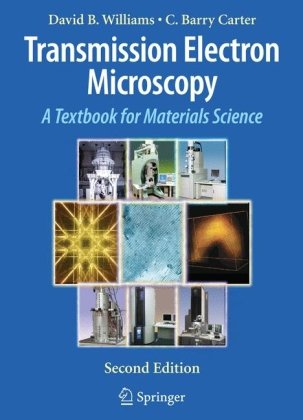
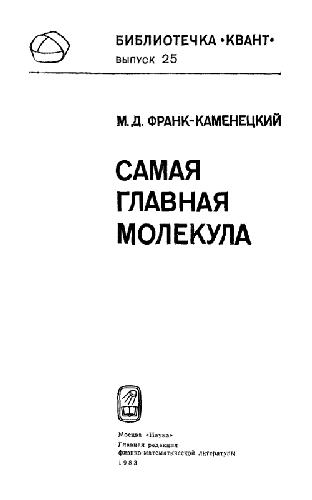
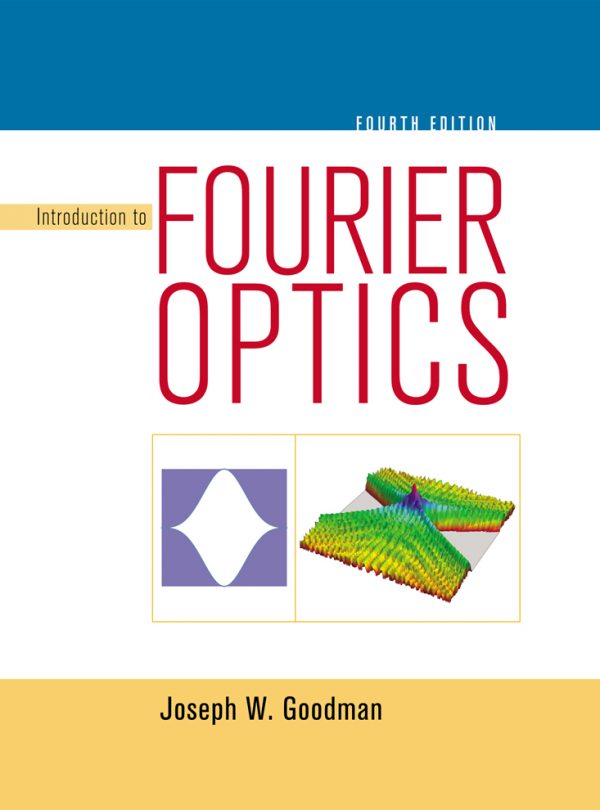
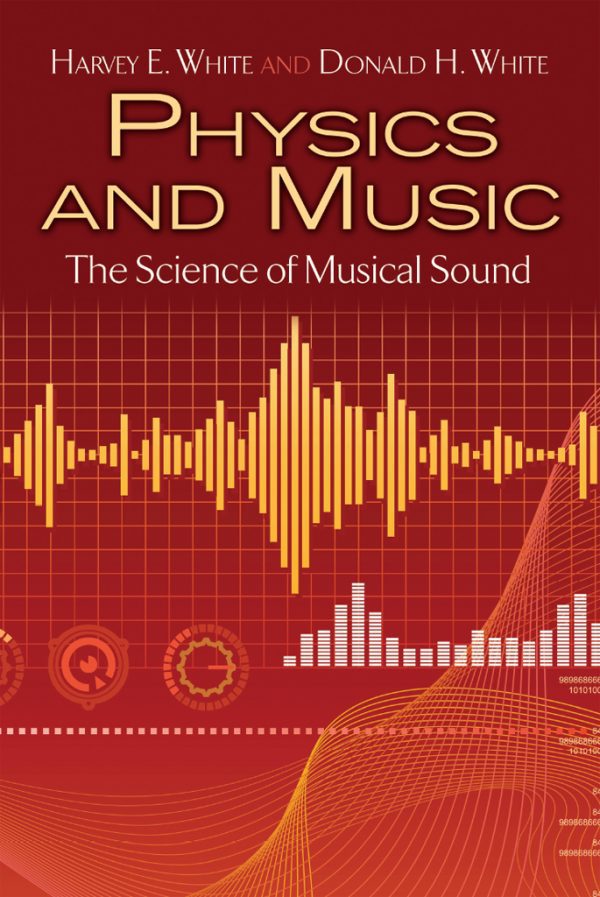
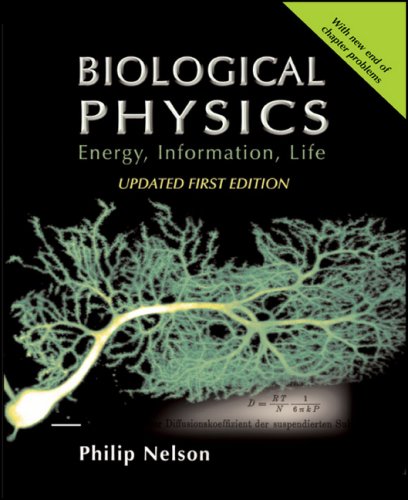
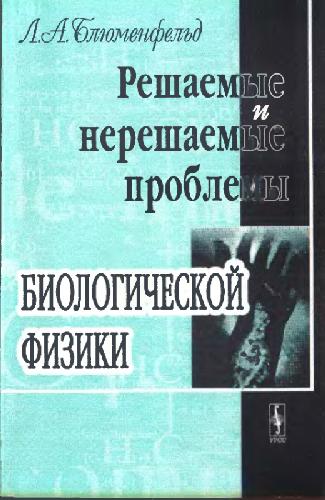
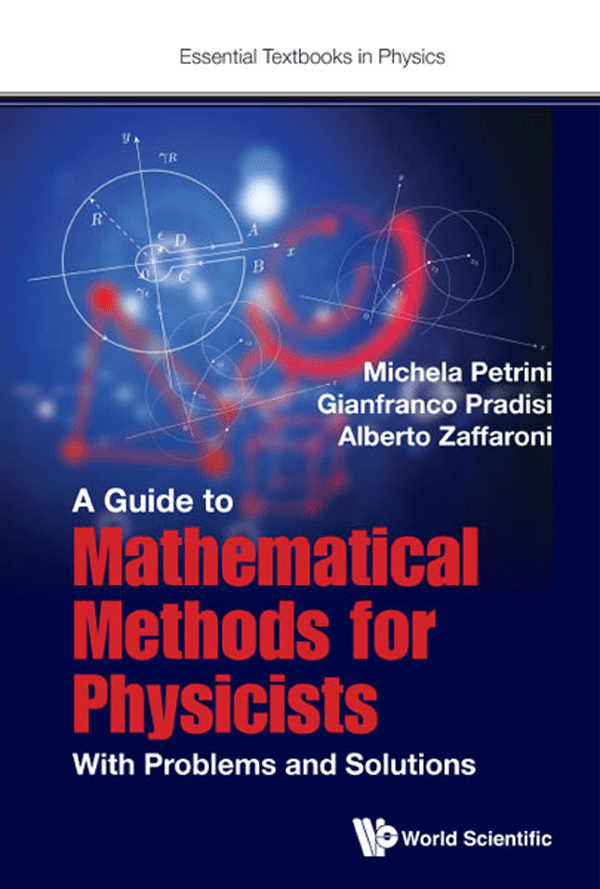
Reviews
There are no reviews yet.